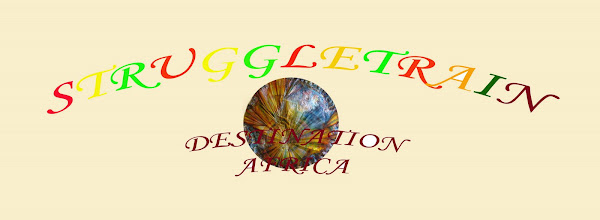 MY search was originally for a publication unique to Africa.
Whilst writing this Blog I hope I will find such,
but first let me try to put into my own simple words, an article that appeared
MY search was originally for a publication unique to Africa.
Whilst writing this Blog I hope I will find such,
but first let me try to put into my own simple words, an article that appeared
- Ugiomoh A. O., (2004) "Photologos and or Narrative Semiotics: which way to Rehabilitating African Art History" Third Text, 8:1 P 10. "The Philosophy of African Art History: A Hegelian Interpretation" (Ph.D. Dissertation University of Port Harcourt 2003 Unpublished)
- "Nigerian Art History and the Hegelian Unconscious: The limits of Lineal Evidence in Historical Practice" Third Text 2005
- "The Dialectics of Studio Criticism: An Evaluation of Wangboje's Example" in Issues in Creative Arts and Art Education: Wangboje Memorial Essays Eds Stella O. Idiong and Frank A. O. Ugiomoh. Lagos: AWanSCA Books, 2003, Pp 169-181
http://www.sil.si.edu/SILPublications/ModernAfricanArt/maadetail.cfm?subCategory=South%20Africa
Directed initially by printmaker Solomon Irein Wangboje,
I noticed Willie Bester is included in the 100 S.African artists mentioned
on this Website.
Before my concentration on the particular article of Third Text I need to divert
one more time with:
http://www.art-in-nigeria.com/art_field/for_professor_wangboje_that_art_may_live.htm
where Frank Ogiomoh writes:
"The debate regarding the qualifications teachers of Fine Arts
should possess to teach art better at the University level should been
seen as an ongoing one.
This piece is yet another contribution to that debate
and it is dedicated to the memory of Professor S.I. Wangboje
whose thought are rearticulated and enlarged here."
Below are the three most recent articles by Ogiomoh,
in Third Text,
mentioned through 'InformaWorld' of which I have partial access.
- Frank A. O. Ugiomoh The Crises of Modernity Third Text, Volume 21, Issue 3, 2007,
- Pages 297 – 305 10.1080/09528820701362266
- Frank A. O. Ugiomoh Nigerian Art History and 'The Hegelian Unconscious' Third Text,
- Volume 19, Issue 4, 2005, Pages 329 – 338 10.1080/09528820500124503
- Frank A. O. Ugiomoh Photo-Logos and/or Narrative Semiotics Third Text,
- Volume 18, Issue 1, 2004, Pages 1 – 11 10.1080/0952882032000182677
Wishing to write this Blog as up to date as possible,
I have chosen the most recent entry of 2007,
where he mentions the topic
“to explore the reality of displacement”.
He explains
“A crisis exists in the efforts to peg Africa’s cultural frames of reference to those
which Western modernism has defined. What is of interest will be the realized
objective of reconciling the effects of displacement in contemporary African Art
Practice.”
Under the heading “A Conceptual Frame for Art in Africa”
Ogiomoh says
“I have wondered how the carvings on Egyptian, Ashanti, Benin and Basonge stools
relate to the objective of sitting. Could it be that such decorations are
born out of an intensification of the spiritual dimensions of culture?”
 Mudfish: 16th century carved bronze stool,
with a royal Benin symbol as centre-piece.
Shown at National Museum Lagos.
Mudfish: 16th century carved bronze stool,
with a royal Benin symbol as centre-piece.
Shown at National Museum Lagos.
1. intracultural ;Territorial boundaries - but works unlimited.
2. Broad boundaries - leaving intracultural links
3. Diverse groups - with intracultural interests - aspiring to larger cultural circles.
"An awakening of societal conciousness in the encoded message that art forms convey"
is a perfect way to express the power of wordart.
The reason, as I see it, to write about conceptually motivated images,
and for understanding the
awareness, strength, definition, support and dialogue of African Collectives.
Says Mr Frank Ogiomoh,
"Some collectives aspiring to define an identity for African Art in intercultural
dialogue have continued to identify the preference for creative liberty for which
African Art was apparently known before contemporary modernism."
He mentions that while Aina Onabolu (1882-1963 modern arts teacher and painter)
was attracted to academic realism,Pablo Picasso was dicovering the creative liberty
of African and other non western traditions.
 http://en.wikipedia.org/wiki/Aina_Onabolu
http://en.wikipedia.org/wiki/Aina_Onabolu
 An interesting ejournal I have started to research is:
"Ijele is the grandest, most spectacular,
colorful magnificent, "spirit" on the continent of
Africa.
An interesting ejournal I have started to research is:
"Ijele is the grandest, most spectacular,
colorful magnificent, "spirit" on the continent of
Africa.
"HEIRARCHY BETWEEN CULTURES IS REPREHENSIBLE."
 This article is the edited text of a keynote paper given at Africa 05
at the British Museum
http://www.moadsf.org/about/press.html?year=2005
This article is the edited text of a keynote paper given at Africa 05
at the British Museum
http://www.moadsf.org/about/press.html?year=2005



No comments:
Post a Comment